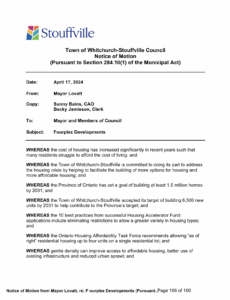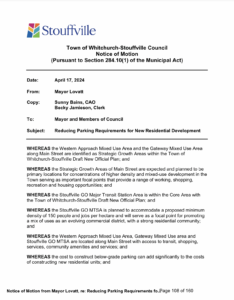Politicians need to remember that this is a suburban, car-commuting nation
This op-ed from the Globe & Mail is a good reminder of the tightrope we walk balancing the aspirational vs our reality. It was a good reminder for me this morning.
From @JohnIbbitson
Sometimes, policymakers and analysts see the world as they wish it was, rather than as it is. This can lead to bad decisions. In politics, it can lead to defeat at the polls.
Earlier this year, a team led by David Gordon, an urban studies professor at Queen’s University, released the latest version of the Canada Suburbs Atlas.
Using census data, satellite and street images and information from local experts, the team plotted growth patterns for 41 Canadian cities between 2016 and 2021.
They noted a small uptick in the portion of the urban population living in city centres, mostly the result of new condo towers. But the overwhelming share of new growth occurred in outer suburbs and in the exurbs beyond them. To be precise:
- Car-dependent outer suburbs absorbed 66 per cent of all population growth between 2016 and 2021. Exurban developments beyond those suburbs absorbed 16 per cent;
- City cores accounted for 13 per cent of population growth, while transit-served inner suburbs accounted for 5 per cent.
“Canada is a suburban nation,” the report reminded us. “More than two-thirds of our country’s total population lives in suburbs.” And most of those suburban dwellers live in car-dependent communities.
Many an urban theorist has sought to imagine cities differently from what they are. Many preach the importance of densification, of infill, of improved transit, of restrictions on sprawl.
But that’s not what North American cities are. That’s not where – and, more important, that’s not how – most people live. And if you tell them they must live differently, they will reject you.
Justin Trudeau’s Liberals used to understand this. Their 2015 election platform included major new investments in infrastructure and child care, both of which would appeal to suburban voters with families. In that election, the Liberals virtually swept suburban ridings in Ontario and British Columbia, a major contributor to their majority government.
While the Liberals haven’t abandoned these priorities, in the past six months they have talked more about streaming services, news delivery and other cultural issues, while promoting the conversion to electric vehicles.
Culture is rarely a top-of-mind concern for voters. And as for the shift to EVs, people in car-commuting suburbs will have questions: Can I afford the EV and the retrofit at home? How far will an electric SUV go in January? Will there be enough charging stations to guarantee a quick charge whenever and wherever it’s needed? How will provincial generating capacity meet demand?
How is any of this supposed to make a couple with two children and a packed agenda – getting to work and back, getting the kids to school and to everything after-school, while shopping for food and checking in on elderly parents – feel better about what lies ahead?
No wonder the Conservatives have pulled ahead in the polls. Pierre Poilievre focuses on middle-class, suburban voters virtually to the exclusion of all else. And as Prof. Gordon’s report observes: “Politicians who can drive a wedge between suburban and inner-city voters will have a substantial majority at the polls.”
If Mr. Trudeau wants to get re-elected, he would do well to obsess on the needs and aspirations of middle-class voters in car-commuting suburbs and ignore every other consideration.
There are all sorts of things wrong with car-commuting suburbs. Driving everywhere rather than walking or taking transit is hard on the environment and hard on your health. New subdivisions require infrastructure that everyone must pay for. Paving over farmland reduces food security.
But car-commuting suburbs allow middle-income people to own a home and raise a family with a reasonably high quality of life. For most people, that trumps every other consideration. As the next generation of young workers seeks a first home, even as permanent and temporary-resident levels soar, jamming the market and pushing up prices, the demand for new tracts of suburban housing will only increase.
By all means densify existing neighbourhoods, convert office buildings to condos and improve public transit while encouraging EVs. But get real: Meeting the demand for new housing, both for young people and for immigrants, means building cities out.
We’ve been doing it now for 80 years. Don’t think for a moment it will ever stop.



